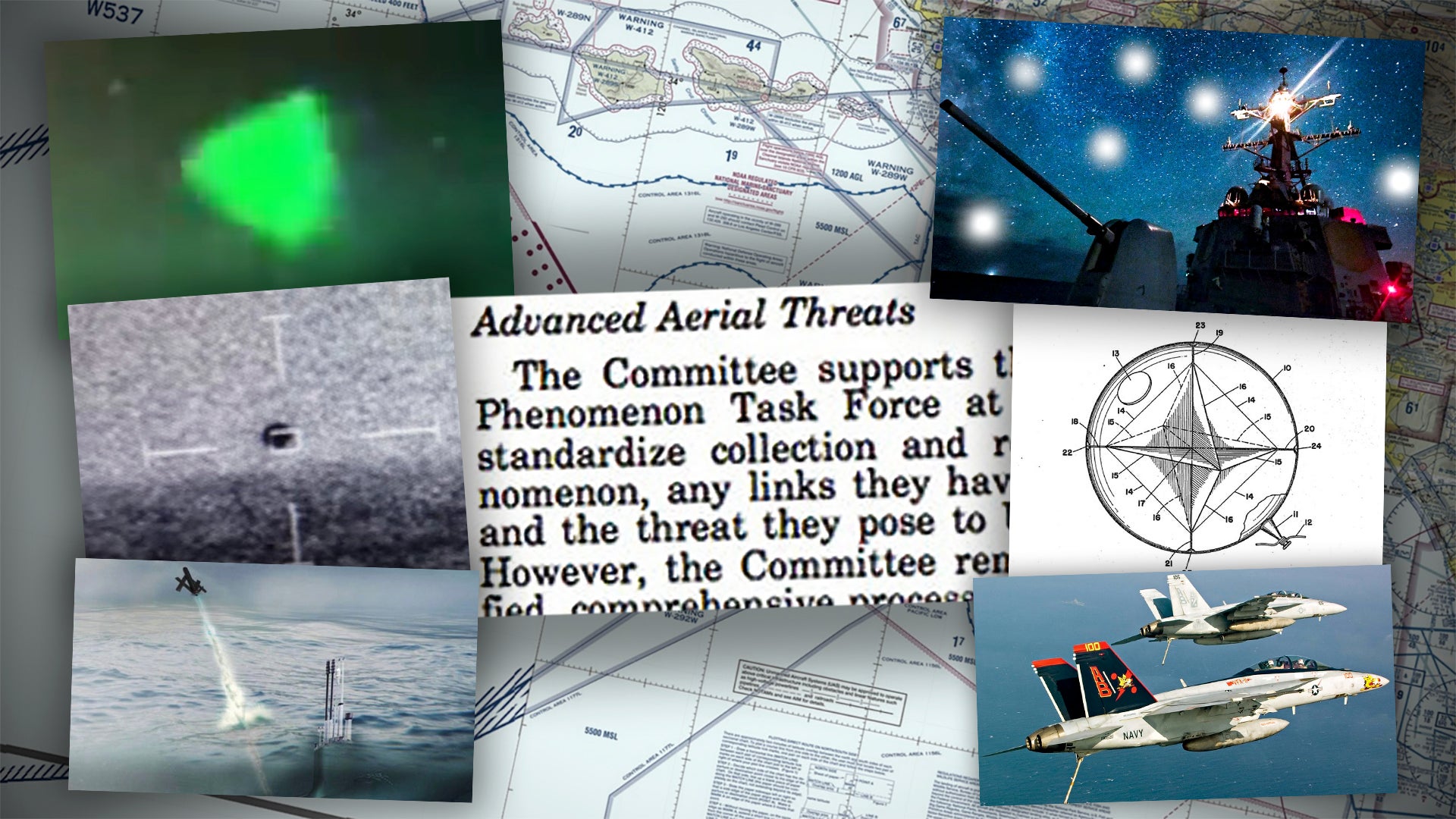We may not know the identities of all the mysterious craft that American military personnel and others have been seeing in the skies as of late, but I have seen more than enough to tell you that it is clear that a very terrestrial adversary is toying with us in our own backyard using relatively simple technologies—drones and balloons—and making off with what could be the biggest intelligence haul of a generation. While that may disappoint some who hope the origins of all these events are far more exotic in nature, the strategic implications of these bold operations, which have been happening for years, undeterred, are absolutely massive.
Our team here at The War Zone has spent the last two years indirectly laying out a case for the hypothesis that many of the events involving supposed UFOs, or unidentified aerial phenomena (UAP), as they are now often called, over the last decade are actually the manifestation of foreign adversaries harnessing advances in lower-end unmanned aerial vehicle technology, and even simpler platforms, to gather intelligence of extreme fidelity on some of America’s most sensitive warfighting capabilities. Now, considering all the news on this topic in recent weeks, including our own major story on a series of bizarre incidents involving U.S. Navy destroyers and ‘UAP’ off the Southern California coast in 2019, it’s time to not only sum up our case, but to discuss the broader implications of these revelations, what needs to be done about them, and the Pentagon’s fledgling ‘UAP Task Force’ as a whole.
A big pill to swallow
Yes, I realize that the idea that an adversary is penetrating U.S. military training areas unmolested, and has been for years, using lowly drone technology and balloons, is a big pill to swallow, but as one of the people who have repeatedly warned about the threat posed by lower-end drones for a decade—warnings that largely were dismissed by the Pentagon until drones made or altered in ramshackle ISIS workshops in a war zone were literally raining down bomblets on U.S. and allied forces in Iraq—it isn’t really surprising at all. Nor is the fact that the Defense Department is still playing catch-up when it comes to the realities surrounding the drone threat, and not just to its forces abroad, but also to the homeland overall. The utter lack of vision and early robust interest in regards to this emerging threat will go down as one of the Pentagon’s biggest strategic missteps of our time.
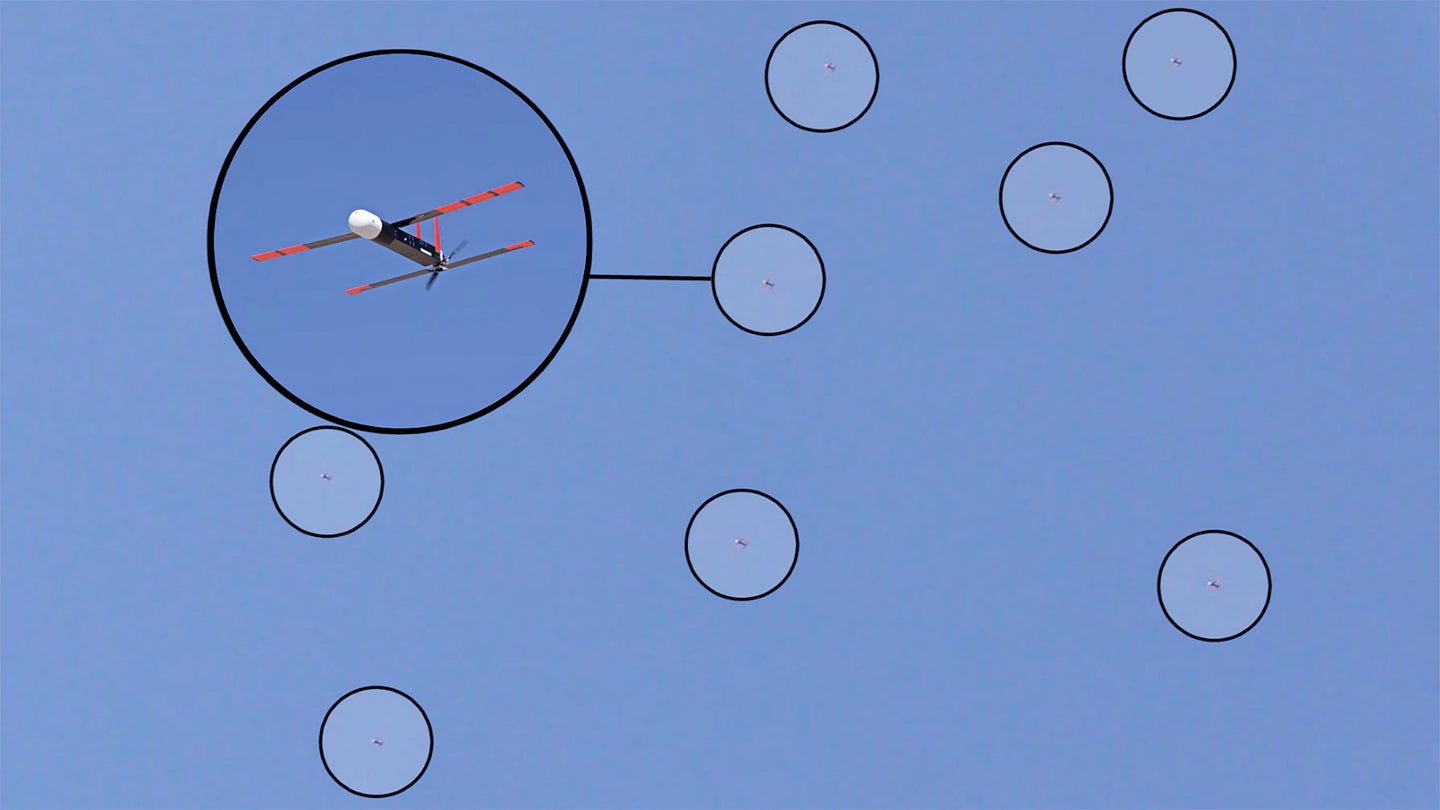
The gross inaction and the stigma surrounding unexplained aerial phenomena as a whole has led to what appears to be the paralyzation of the systems designed to protect us and our most critical military technologies, pointing to a massive failure in U.S. military intelligence. This is a blind spot we ourselves literally created out of cultural taboos and a military-industrial complex that is ill-suited to foresee and counter a lower-end threat that is very hard to defend against.
Before I move forward, I must state that just because I believe the evidence is compelling that many of the bizarre encounters with mysterious objects in the sky as of late, and especially those that the U.S. military is experiencing, emanate from peer-state competitors, not another dimension or another solar system, there are certainly well-documented cases of seemingly unexplainable events that have nothing to do with this type of capability. In other words, our conclusions do not come even close to answering the question of UAPs or UFOs as a whole, especially in terms of the many unexplained incidents in decades past. What they do is highlight an alarming new capability set and tactics that seem to have been allowed to be exploited with little response for years while the Pentagon scratched its head and shrugged, or even worse, turned largely a blind eye toward it.
And that brings us to one of the biggest problems with this topic, as a whole—people expect one blanket and grand explanation for the entire UFO mystery to one day emerge. This is flawed thinking at its core. This issue is clearly one with multiple explanations due to the wide range of events that have occurred under a huge number of circumstances. This thinking must be changed as it limits our ability to solve some mysteries in the hopes of coming up with some fantastical monolithic explanation for every related mystery. So, accepting that there is likely a wide array of explanations to this notoriously abused topic will be absolutely key to successfully studying it and destigmatizing it in our culture, and especially within U.S. military and intelligence circles.
With that in mind, I also believe America’s prevailing cultural issues and the general stigma surrounding UFOs was successfully targeted and leveraged by our adversaries, which helped these activities to persist far longer than they should have. In fact, I believe that those in power who snicker about credible reports of strange objects in the sky and stymie research into them, including access to classified data, have become a threat to national security themselves. Their lack of imagination, curiosity, and creativity appears to have built a near-perfect vacuum that our enemies could exploit and likely have exploited to an astonishing degree.
A very enticing target
Nearly two years ago, I wrote a widely circulated piece that addressed my thoughts on the Pentagon’s sudden willingness to talk about UFOs and its potential implications. I went through the possibilities as I saw them, but above all else, it was clear that this wasn’t some over-hyped myth. Something strange was indeed going on.
Soon after, we were the first to connect key technologies that had emerged around the time that sightings of certain types of mysterious UAPs began to accelerate amongst military personnel—in particular, Navy fighter pilots. This was largely based around new air defense data-fusion and networking capabilities being installed on Navy warships and aircraft, as well as the proliferation of Active Electronically Scanned Array (AESA) radars on Navy fighters and airborne early warning and control planes. We also noted that the most remarkable appearances of these objects seemed to correlate with major Navy exercises where these advances in air defense capabilities were being fully integrated across a Carrier Strike Group. In other words, it seemed that these mysterious craft had a very keen interest in America’s latest and greatest operational counter-air capabilities.

We then got clarification from pilot witnesses on key claims about what they and their squadron mates had experienced before pursuing what was an inconvenient hypothesis for many—that at least some of what these aircrews and vessels were encountering were not an exotic unexplained phenomenon at all, but were in fact adversary drones and lighter-than-air platforms (balloons) meant to stimulate America’s most capable air defense systems and collect extremely high-quality electronic intelligence data on them. And this is critical data, incidentally, that is very hard to reliably obtain otherwise.
These radar emissions, and the datalink communications that go along with them, underpin highly networked counter-air architectures that are unmatched anywhere on earth. By gathering comprehensive electronic intelligence information on these systems, countermeasures and electronic warfare tactics can be developed to disrupt or defeat them. Capabilities can also be accurately estimated and even cloned and tactics can be recorded and exploited. The very signatures of these waveforms alone can be used to identify, classify, and geolocate them by adversary platforms during a time of war, providing a big leg-up when it comes to battlespace awareness.
We are talking about everything from common operating frequencies to highly-sensitive low-probability of intercept emissions tactics, to datalink encryption, to distinct radar modes and employment procedures here. In other words, this is among the most critical intelligence a peer-state enemy can obtain and there aren’t many easy ways of doing it. Even in a war zone, where aircraft and their systems are operating potentially in the same general area as adversary intelligence-collection systems, using their full combat capabilities may be restricted to maintain the secrets of those critical capabilities. Proximity to the emitters in question and how long their emissions are exposed to an intelligence-gathering system is a major limitation, as well. Traditional espionage is another way adversaries look to gain information on these critical systems, as well, but nothing beats going out and actually sucking up the electronic signatures as best you can. Actually becoming the target of their interest takes the quality of intelligence collected to a whole other level.
Historic precedent
The beginning of making the case for drones and balloons being the culprit for much of the recent UAP activity came when we posted an entire historical precedent for very similar operations dating back to the development of the A-12 Oxcart spy plane and the advent of modern electronic warfare itself. In essence, during the early 1960s, the CIA launched radar reflectors on balloons off Cuba’s coastline via a U.S. Navy submarine and employed an electronic warfare system called PALLADIUM that would trick the latest Soviet radar systems into showing their operators that enemy aircraft were rushing toward Cuban shores or doing all types of crazy maneuvers. This coaxed the Cuban air defense system and its radars to light up and spurred rapid communications between air defenders on the island.
The balloon-borne radar reflectors of different sizes also showed up on the Soviet radars, and by monitoring the targets that the radar operators concentrated on, and thus could detect, it was determined how sensitive their Soviet radar systems actually were. This provided critical information on the survivability of the Mach 3+ and somewhat stealthy A-12, but beyond that, it set a precedent of how electronic warfare and airborne targets could be used to prod an enemy’s air defenses so that critical intelligence as to their capabilities could be determined—all without actually putting a pilot in the air at risk.
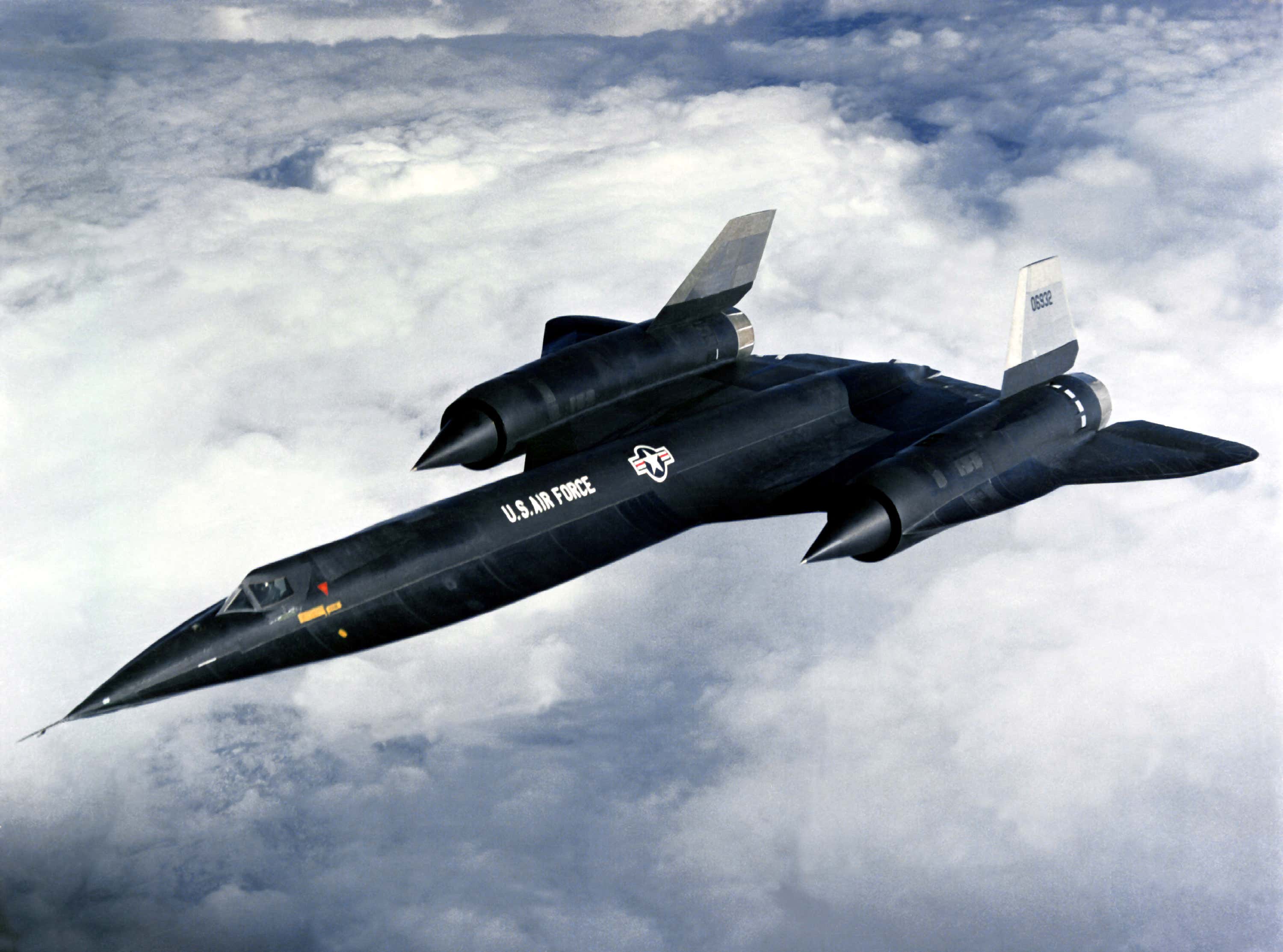
That was just the start of these types of operations. As the decades went by, far more complex and capable integrated air defenses began proliferating throughout the globe, placing a greater need on collecting this type of critical information. From what we understand, PALLADIUM evolved and subsequently spiraled into a far wider electronic intelligence gathering ecosystem, much of which is still highly secretive in nature and exists to this day.
The U.S. has extremely capable standoff electronic intelligence-gathering aircraft, such as the U.S. Air Force’s manned RC-135 Combat Sent and Rivet Joint, as well as the Navy’s EP-3E Aries and P-8A Poseidon, not to mention U-2S Dragon Lady and unmanned RQ-4 Global Hawk, that are all capable of building up a picture of the enemy’s electronic order of battle from a distance. Even America’s top fighter aircraft are increasingly equipped with digital electronic warfare suites including highly advanced electronic support measures (ESM) that can provide tactical electronic intelligence of very high quality. Other countries, such as Russia and China, possess electronic intelligence (ELINT) gathering aircraft types, as well, albeit without the same level of capabilities or, in some cases, the same international reach and persistence.
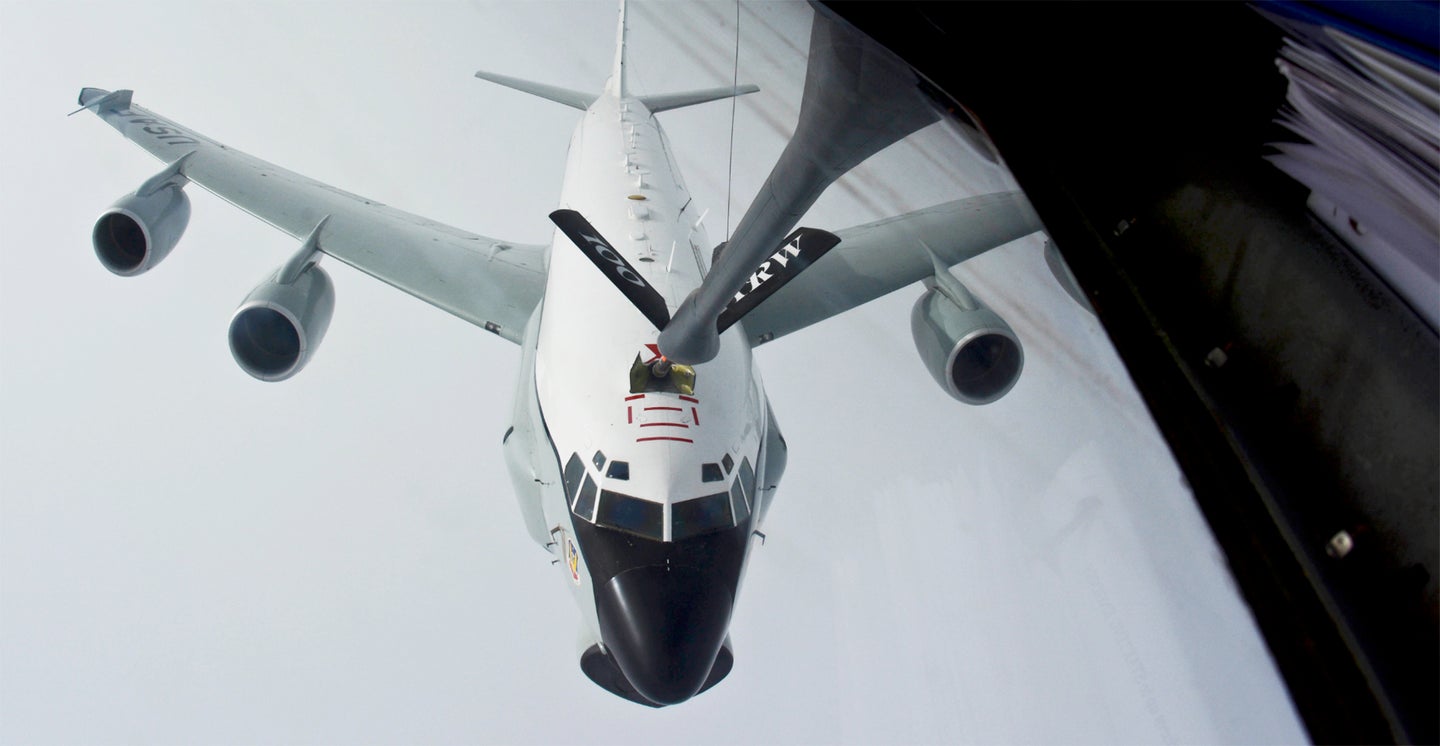
While the United States also has very advanced, stealthy assets that can penetrate into enemy airspace to collect electronic intelligence data of a totally different fidelity, right near the emitters themselves and over long periods, America’s adversaries do not, at least not yet. They have also historically lagged behind the U.S. government in space-based ELINT systems, which offer another way to scoop up emissions coming out of denied areas, and do so discreetly. This leaves America’s potential foes to have to get more creative in order to obtain this critical information.
So, for the time being, even though exquisite stealth unmanned aircraft may be out of their reach, swarms of lower-end drones and other less-advanced unmanned airborne platforms certainly are not. And regardless of America’s own stealth capabilities, one would be remiss if they were to believe that clandestine operations, such as the one using PALLADIUM 60 years ago, aren’t still going on today. In fact, we know the use of balloons strapped with payloads to collect vital intelligence continued throughout the Cold War.
While manned overflights of the Soviet Union ended with the U-2 crisis in May 1960, high-altitude balloons continued to float across Soviet and Warsaw Pact borders for decades to follow. Unsurprisingly, this activity was conducted covertly, but continued even after the advent of spy satellites. For the Soviet Air Defense Forces in particular, the balloons were a significant menace, proving especially hard to defeat. There is evidence that at least some Soviet fighter units maintained gun-armed interceptors at round-the-clock readiness specifically to shoot down the intruding balloons and one aircraft, the M-17 Mystic, was even developed to carry out this particular mission, although it never entered service in this role. The Russians surely took note of this unique intelligence-gathering application.
Fast forward to the 21st Century, and revolution in lower-end unmanned aircraft has provided the perfect attritable platform—one robust enough to carry out the task, but low-cost enough so that it wouldn’t matter if it got lost in the process—for just such a mission set. And, as we explained in great detail, so are balloons carrying radar reflectors and expendable electronic intelligence and even electronic warfare payloads. Whereas 60 years ago, electronic warfare systems may have required an entire plane or a large pod on a plane, today totally expendable electronic warfare systems that can wreak havoc on radars and other air defense nodes can be dropped out of a chaff and flare dispenser or be housed in the tip of a small missile—or flown on a balloon or lower-end drone.
Preconceived notions
In our investigative pieces on PALLADIUM, we also detailed how radar reflector balloons can be made in many configurations and we even discovered a patent dating back to well before PALLADIUM for a radar reflector balloon that is an exact visual match for the initially totally bizarre-sounding “cube inside a sphere” objects that Navy pilots had reported seeing off the east coast. We also discovered that initial reports that pilots visually saw these craft moving erratically were incorrect. In fact, when physically encountered, they were floating in the air and acting exactly as balloons would.
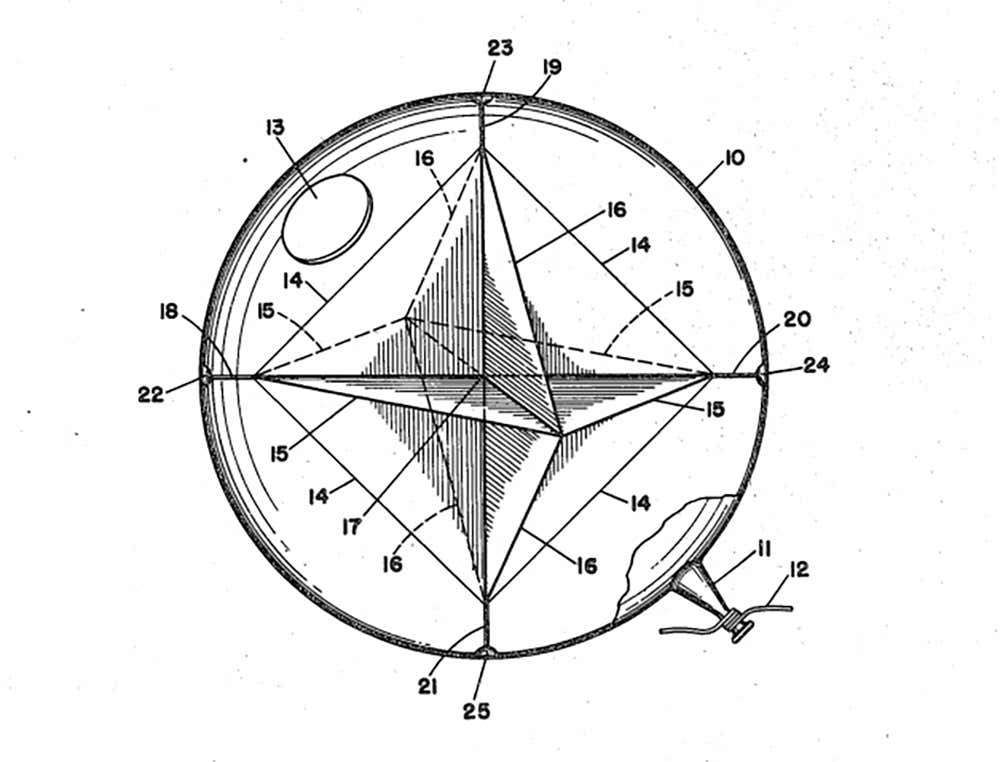
While balloons can look like virtually anything, drones can also look very strange due to the huge amount of configurations that exist. When most people think of drones they picture a small fixed-wing airplane or quadcopter type setup. That may be true for the heart of the burgeoning civilian market, but there are far more configurations, some of which look downright alien and perform unlike a traditional fixed-wing aircraft or quadcopter. These include everything from triangle-shaped flying wings to hybrid rotor/fixed-wing aircraft or even a vertical tube with a rotor at each end. There are even drones that launch smaller parasite drones and act as their mothership.

Drones can also be networked together and fly in formation. They may not all look the same, either. For instance, smaller drones may be accompanied by a larger drone that carries computing hardware and communications gear, such as a basic satcom terminal or line-of-sight data-link, working as the command and control and communications router for the swarm. Or they may not have any man-in-the-loop communications at all, instead, they can be programmed to fly a pre-planned course or be equipped with programming for them to seek out certain stimuli in their environment, such as particular radar emissions, and to fly certain preplanned programs near those emitters. In fact, some of the biggest leaps in lower-drone technology came from Israel decades ago when they developed drone systems suited for seeking radar emitters and confusing or destroying them.
They can also have surprisingly long range. Iran has many small and relatively cheap fixed-wing drones that can fly very long distances running on efficient, small gasoline motors, for instance. These drones can travel hundreds of miles and loiter for hours while still carrying a relevant payload and have been thoroughly weaponized and used repeatedly in offensive operations. This has led to dystopian warnings to Americans visiting or living in one of the world’s most highly defended capital cities.
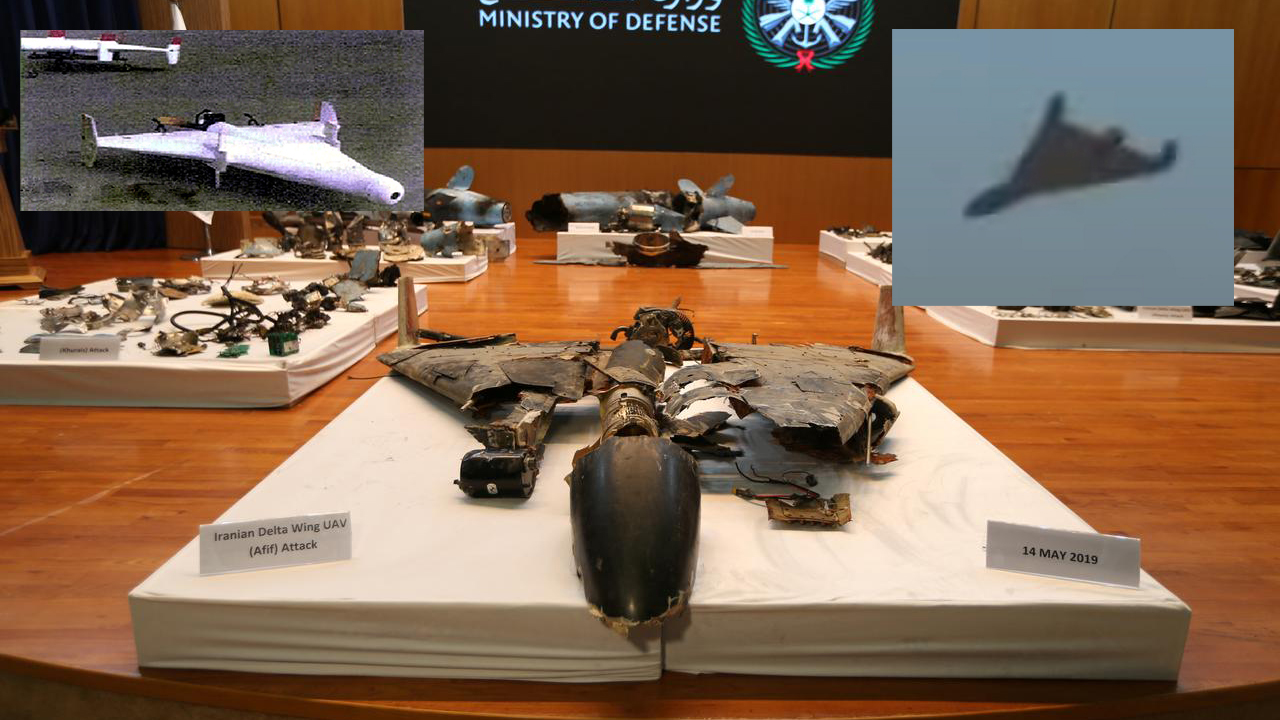
These are just some general parameters that are the actual reality when it comes to unmanned systems, and they differ drastically from the assumptions most people make about smaller drones in general. I often hear “oh they can’t fly that way” or “they can’t fly that long, the battery would run out” or “they couldn’t be jammed so there is no way they are drones.” These statements are blatantly wrong, not just when it comes to the capabilities of a peer competitor, but even a less capable country or even a non-state actor.
Small weaponized drones, especially those that carry an explosive charge, have become a cheap asymmetric linchpin capability and, just as I predicted years ago, are rapidly evolving into becoming game-changers on the modern battlefield. They are also becoming a big business and their use as assassination tools has migrated to drug cartels and other organized crime syndicates. Even their development has devolved down to individuals and small rogue groups operating far from war zones.

Simply put, when it comes to lower-end drones, most people’s assumptions seem to be pulled out of thin air or from what they have seen at the electronics section at big box stores. As such, these preconceived notions are indicators of why relatively simple drones and their unique configurations and performance characteristics can seem unfamiliar, even to experienced fighter pilots or observers on the ground that have never been really trained on these threats and all the different ways that can manifest themselves.
The swarm is not science fiction
When it comes to the U.S. Navy, it is using swarms of lower-end networked drones, submarines, ships, unmanned underwater vehicles, and more, to convince the enemy to think they are seeing ghost fleets and aerial armadas that aren’t really there. You don’t have to take our word for it, the Navy has a program of record for just this—that being Netted Emulation of Multi-Element Signature against Integrated Sensors, or NEMESIS.
The War Zone was the first to report on this program, which you can read all about here, but, suffice to say, it lays out an architecture that represents a quantum leap in electronic warfare. Yet none of its components are all that exquisite; it’s just the networking of them together and being able to combine their effects cooperatively with highly agile computing and software that is. Swarming drones working together to decoy, jam, and distract the enemy? That is not a high-end capability. Unifying those effects with ships, other aircraft, submarines, and more in real-time to make multiple enemy sensors in disparate locations see the same thing? That is revolutionary.
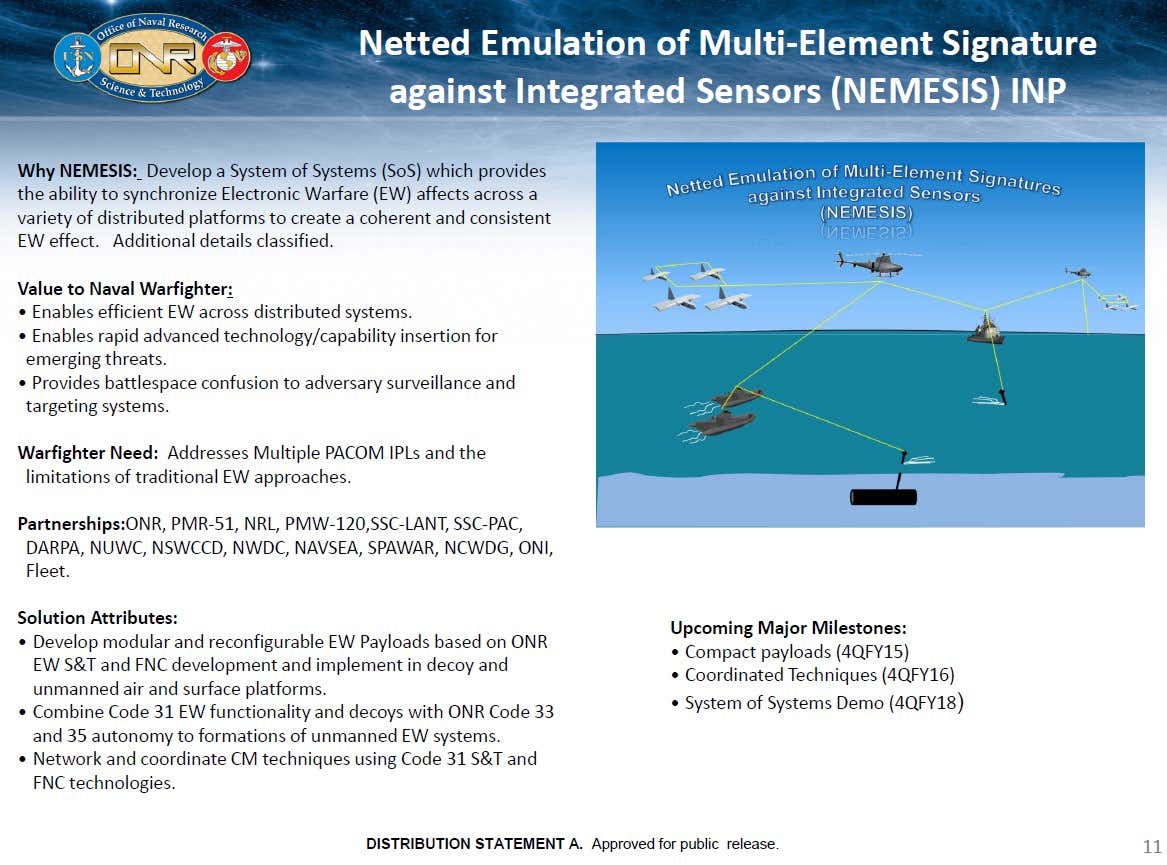
After we posted the NEMESIS piece, many were asking our opinion if it was what Navy pilots had encountered off America’s eastern seaboard. I am comfortable stating that I don’t believe those incidents were all secret American tests of elements of what could be incorporated into NEMESIS. Quite the contrary, I believe it was largely a foreign power actively using what could be described as some components similar to what could be found in the NEMESIS ecosystem to collect critical intelligence on America’s most advanced sensor systems and more. Once again, this doesn’t mean everything aircrews saw off the east coast during this period were these capabilities, but it seems like a glaringly obvious explanation for most of them, and it is far more so now than it was when we first reported on those incidents.
Also, many of the strange high-performance characteristics ships and planes sometimes detect by radar at beyond visual range during these incidents can and likely are the result of electronic warfare. In fact, things like rapid accelerations in speed and sudden drops in altitude on radar represent very basic tenets of electronic warfare tactics. In the case of the east coast events, for instance, as far as we have been told, the high-performance capabilities of these objects were never visually observed, but they were seen on radar. The visual encounters describe balloon-like objects doing balloon-like things—not moving fast at all—while other objects feature performance more similar to drones than anything else.
Months after reporting on NEMESIS, we acquired the Naval Safety Center incident reports spanning most of the 2010s regarding anomalous objects that fighter pilots encountered off the eastern seaboard of the United States. What we found was stunning. While there were only a limited number of reports, and there were very likely other reports never filed with the safety center and instead filed as classified intelligence events, the ones that were there didn’t describe alien craft at all. Instead, they described jet-powered, missile-like drones and other unmanned fixed-wing aircraft flying up in the flight levels, as well as multi-rotor drones hovering at very high altitudes far out to sea. There there are balloon-like objects, the origins of which were all unexplained even after official investigations.
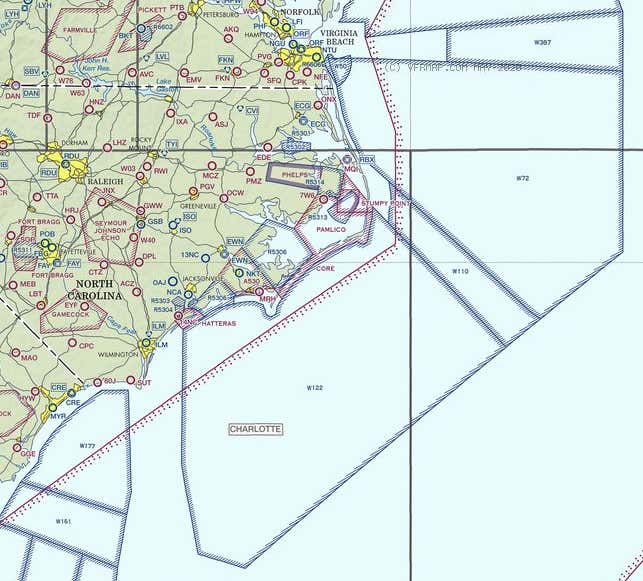
Certainly no civilian is flying cruise missile-like aircraft at high altitude dozens of miles off the east coast. And flying a multi-rotor drone far out to sea at bizarrely high altitudes isn’t normal. So, who do these belong to? Well if not us, and they are clearly not of an alien origin, then someone else. And who would want to be flying around in these specific chunks of airspace that are literally designated for use by America’s top military aircraft, with the Navy’s most capable warships often operating below? America’s preeminent adversaries—China and Russia—that’s who.
The motive and the opportunity
Those warning areas—airspace that can be set aside for military training—are where America’s most advanced sensors blare their powerful radio-frequency communications and sensor systems day in and day out. F-22s, F-35s, F/A-18E/Fs, F-15Es, E-2Ds, and much more, fill those training areas daily. Below them, Aegis Combat System-equipped cruisers and destroyers, and America’s supercarriers and amphibious assault ships, push their radar and networking systems to the limit to keep their skills sharp and to train for upcoming deployments. We are talking about the most advanced air defense sensor and networking technology on planet earth all operating in one region (the counterpart being off the coast of Southern California) as reliably as the office hours at your local bank.
And they are doing so while at home, in areas where, unless intelligence warns them of spy ship activity nearby, their systems are largely being used to their maximum potential. All that potential intelligence zapping through the air, operating as if it is far from prying eyes. Simply put, it is the biggest electronic intelligence target on earth and the lowly drone and balloon, paired with America’s strange aversion to taking unusual things in the sky seriously, have provided the perfect medium for which to gobble it up with little to no chance of major repercussions.
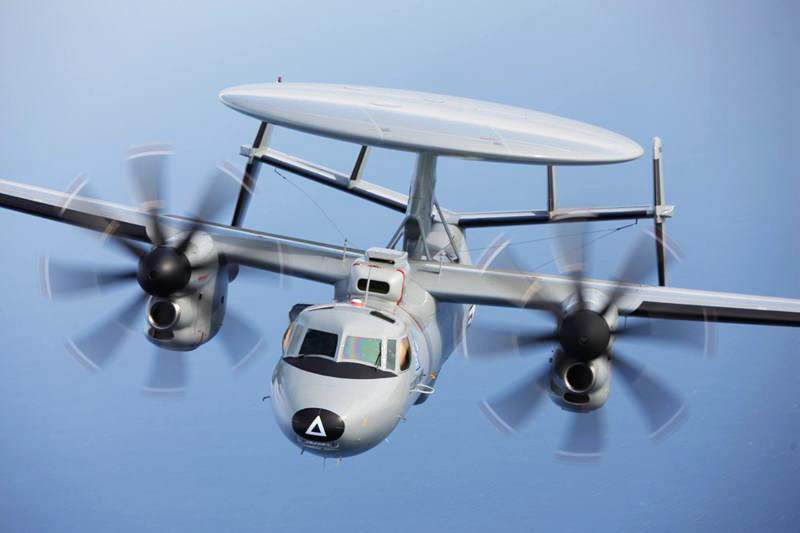
In fact, the Navy fighter pilot who has spoken about recent experiences with the UAP issue the most, Ryan Graves, seemed to have inadvertently summed up what I believe has been going on, and not as a secondary ‘worst case’ possibility as he describes it. Graves stated the following on the Kevin Rose Show:
“If we do have what we would call a ‘red threat,’ one of our traditional enemies that are using some type of perhaps new technology, or hard to identify technology that is out there in our working areas soaking up our waveforms and our radar and our sensor and our comms, watching our tactics on a daily basis, it’s a major, major intelligence failure to have these things out there. And because they look slightly different than what our average threat would look like, everyone wants to ignore it. So if we had a Chinese or Russian fighter jet flying out there watching us it would be a major deal. But because it looks slightly different we want to ignore it.”
Once again, it is a hard pill to swallow, but, nevertheless, bingo!
Robots in disguise
As we noted earlier, these drones and the balloons, in particular, could also look very strange to pretty much anyone who encounters them, even like a cube inside a sphere, or a metallic blimp with strange appendages. In fact, the odder they look, the better the cover for ongoing operations. Putting infrared bricks on drones giving them huge IR signatures or making radar reflector balloons look alien in shape would not only confuse the targeted adversary and likely allow for these operations to go on for far longer unchecked than they would otherwise, but they would also massively increase the quality of intelligence data they receive.
With this in mind, making things appear stranger and less threatening than they actually are is likely one tactic the enemy has used for these operations, and this can often come at a very cheap price. We have discussed how sometimes the simplest measures can make the most impactful illusions, and how even similar tricks that Disney uses to skew theme park goers’ perceptions could be employed in a guileful manner to confuse an adversary. That seems to be part of the playbook being executed here, and what better passively-reinforced cover story is there in America than UFOs and all the stigma that goes along with it? The fact that pilots have historically refrained from reporting unexplained craft in the skies due to fear of their careers being impacted is all you really need to know when quantifying how relevant and effective such a tactic can be.
With that being said, not only could these things, or other platforms nearby, passively suck up electronic intelligence that presents itself in their vicinity, but the genius of their employment is that they themselves are the targets, and they are not necessarily friend or foe. This makes them flying intelligence ‘honey traps’ in their own regard. They get aircraft and ships to lock them up directly, likely running through multiple radar modes in the process as they get fully interrogated by various platforms, even at close range. This provides otherwise unthinkable opportunities to record all those signatures and tactics, even ones that may not be used otherwise if there was a known intelligence-gathering threat present.

To put it another way, their ambiguous origins and the curiosity surrounding their presence sets up a situation in which they can make radar systems work directly against them without restrictions. Their small radar cross-sections and potentially elusive electronic warfare tactics would push those sensor systems and their operators even harder in order to lock them up, thus giving up even more valuable information.
Once again, the operation involving PALLADIUM during the A-12’s development worked not just because they could get radar operators searching for something that wasn’t there, but because they gave them hard targets to lock up. It seems that we are seeing history repeat itself, but this time it’s the other guys putting on the magic show.
It’s also worth saying that a campaign like this also has huge information and psychological warfare aspects. Eventually, if it is officially disclosed or outed, it makes the targeted country look horribly impotent in that they couldn’t even defend their own airspace or even define a threat to it. Even more embarrassing, they let hollow cultural stigmas provide an open door to enemy intelligence operations. Beyond that, these activities cause confusion and muddy the waters as to what is a threat and what isn’t. They can also cause fissures between those in uniform who observe these craft and their less than responsive commands. It even fits into Russia’s hybrid warfare playbook, elements of which have been copied by other nefarious actors around the globe, including China.
Clandestine launch platforms
In November 2019, we went on to lay out how submarines can launch their own aerial drones and have been able to so for far longer than most realize. Fast forward to today, and the Navy is now procuring swarms of drones for its submarines. Keep in mind, this is what they openly discuss, imagine the capabilities that have been in place for some time that have never been disclosed. Russia and China, who are looking for every asymmetric advantage against America’s overwhelming technological superiority, certainly had seen the promise that the lowly drone showed for these types of ELINT gathering operations and Russia, in particular, has the submarines to deploy them in the hemisphere in question. Doing so with radar reflector and electronic intelligence gathering payload-carrying balloons is an even lower hanging fruit.

Many naysayers have said that this is impossible because there are no Russian submarines deep in the Atlantic and that the U.S. largely controls this massive body of water. We begged to differ on that point and it turned out that the Navy eventually did too. It is now open knowledge that Russian submarines are operating deep in the Atlantic to the point that the Navy is calling it a contested body of water. And if you think the Navy has a perfect track on those boats at all times, you would be sorely mistaken. So, there is a motive and there is a delivery method, but really, we are probably overthinking it, at least to some degree.
The cold hard truth is that you don’t need a submarine to launch a swarm of low-end drones and/or balloons to gather intelligence on an adversary’s sensors. They can be launched from any vessel really, and especially from medium to large ones. There is a lot of shipping traffic out there at any given time, with ships flagged all over the globe and operated by an even more diverse roster of operators. A lowly freighter would be an effective delivery platform, and a far more accessible one. In fact, this concept of operations is well established already and considering the ranges that some of these smaller drones can fly, it is even less of an issue. They can be launched in international waters.
An expanding picture of widespread events
Over the past two years, we have also reported on what appears to be an increasing phenomenon of large drone swarms spotted over the United States, as well as its outlying territories, and especially near strategic installations. The Colorado drone swarm saga seemed like something of a bizarre series of events in which the general consensus couldn’t seem to settle on a case of mass hysteria or something actually occurring—this was not helped by really reckless reporting on the issue by one or two major outlets. Our subsequent investigation showed that internal correspondence between federal and local stakeholders pointed to it being anything but some product of mass groupthink.
Then things got even more serious when we uncovered a series of drone swarm events over the massive Palo Verde nuclear plant in Arizona. Subsequent documents showed that this was far from a one-off anomaly, with dozens of drone incursions involving America’s nuclear plants having occurred not long before or after. How to protect this highly sensitive infrastructure from threats posed by drones remains a strangely awkward debate. While some claim an attack from small drones may have limited impacts on a nuclear facility—a highly debatable claim—there are other concerns, including those surrounding using drones to find networking security holes and more.
Then, maybe most chilling, we uncovered that drones had taken a very troubling interest in one of the most important U.S. air defense sites on earth—the Theater High Altitude Area Defense (THAAD) anti-ballistic missile battery on Guam. This is literally the last line of defense against incoming ballistic missiles for America’s most important base in the Western Pacific. It is also the home of an AN/TPY-2 radar, one of the most advanced in the world, that provides surveillance and targeting for the THAAD missile interceptors. It isn’t hard to imagine how valuable electronic intelligence from that radar and the system’s local area and beyond-line-of-sight datalinks would be to an adversary like China, which not only has a huge interest in disabling such a capability during a time of war, but also learning from it to develop its own systems.
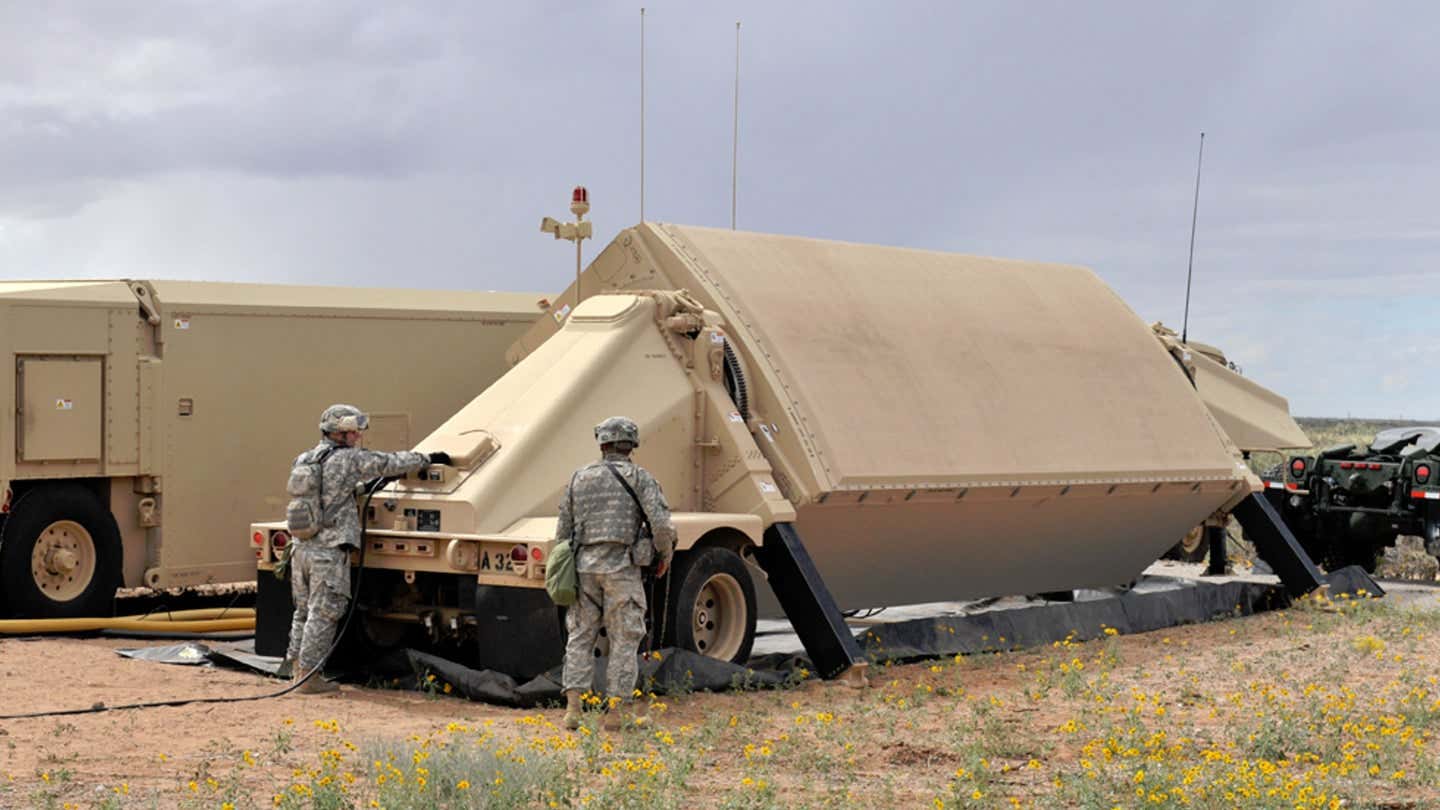
While some may brush off the actual destructive capabilities of a relatively small drone, they shouldn’t. A drone packing a small charge may not be able to sink a ship or blow up an entire missile site, but it can punch a hole into a radar array and put the entire system out of business for long periods of time. In other words, a mission kill is just as effective at achieving the primary goal of disabling a defensive system as literally blowing it up. And yes, it is ironic that a THAAD battery, one of the most technologically impressive surface-to-air weapon systems ever created, can swat down incoming ballistic missiles but is extremely vulnerable to what could be as simple as a modified hobby drone. Once again, this is in large part a result of the Pentagon’s unwillingness to recognize the threat of low-end drones before it materialized and its chronic under-investment in short-range air defenses (SHORAD) that withered on the vine in the decades following the dissolution of the Soviet Union, a situation which you can read all about here.
The same can be said for warships. While a swarm of drones couldn’t sink a destroyer, they can overwhelm its defenses and neuter it by attacking its sensors, leaving it blind, vulnerable, and useless—the definition of a mission kill. Our report on the events that occurred off Southern California in the summer of 2019 underlined just how troubling the situation has become.

Swarms of drones harassed a number of U.S. Navy destroyers executing combat drills less than 100 miles off Los Angeles. This occurred on multiple nights. The level of documentation in that article alone shows just how palpable this part of the so-called phenomenon has become. You can imagine just how good the intelligence would have been with those ships’ sensors and communications systems stimulated by the swarm of unknown origins within the perceived safety of America’s own territorial waters. That swarm could have been, and likely was, sucking up, or helping another nearby platform suck up, all that sensitive ELINT data on the most capable warships on earth and at very close range.
Once again, in that case, the drone swarm could have come from a simple cargo vessel and it wouldn’t have to be even within line-of-sight of the destroyers, which are easily tracked using open sources during routine training. The drones used in this event appear to have been smaller fixed-wing types similar to those that America’s adversaries have built for various missions, like long-range strike, anti-radiation, decoy, and surveillance operations. As noted earlier, they can fly for hours and could easily be programmed to execute a certain route in the vicinity of where the destroyers were operating or even potentially programmed to react to certain RF emissions, at which time they would fly pre-programmed maneuvers near those emissions. This isn’t some crazy high-tech thing. These are capabilities that America’s primary adversaries possess and are further refining with each day. China, in particular, is far ahead in this regard and already has the operational capability to rapidly deploy large networked swarms that can work cooperatively together. Russia is also in the game and has focused on drone swarms that are electronic warfare enabled.

Uncompelling ‘UFO’ evidence
Beyond the so-called ‘Tic-Tac’ video that just looked like a blurry little Tic Tac, I have seen nothing in any government ‘UAP’ videos that supposedly show unexplainable capabilities or craft that actually portray that. In fact, quite the opposite. I have stated this repeatedly and tried to explain some of the unique dynamics at play with modern targeting pods and other factors, with many being offended by the mere thought that the videos simply are not what many have portrayed them to be. I have talked directly to the folks that design and build the sensor systems themselves. They don’t see anything either, which I find quite strange considering these videos are supposedly evidence of flying objects that are unexplained.
Of course, we are only shown snippets of each video. There could be more footage that does show more puzzling maneuvers, but that simply isn’t the case at this time. At least when it comes to the ‘Go Fast’ and ‘Gimbal’ videos, while the exact origin of the craft shown may not be known, they certainly are not unexplainable.
The three officially furnished government ‘UAP’ videos:



In recent weeks, more official evidence has come to light. This includes recently released images taken from an F/A-18 cockpit that clearly show balloons, not strange totally unexplainable craft. A video and still images from the incident we reported on that occurred off the California coast in 2019 have also come to light. They seem to show either delta-wing-shaped drones, very similar to the ones we have discussed earlier, or, and far more likely, another type of drone that is obscured by bokeh effect, the result of a bright light source being recorded out of focus through a night-vision scope by another camera. Once again, nothing appears unexplainable here. Quite the opposite, really.
One other leaked set of images, taken by the Littoral Combat Ship USS Omaha around the same period of time, shows what some claim is a ‘trans-medium craft’ disappearing into the ocean. The stills provided prove nothing of the sort. It looks like a balloon or other object hitting the water as seen through a thermal imaging system. Once again, maybe other data exists that is compelling and truly exotic, but this certainly isn’t that.
As for the authenticity of these latest photos and videos, our friend John Greenewald got confirmation that they are indeed authentic from the Office of Secretary of Defense spokesperson on the UAP issue, Susan Gough.
As it sits today, the Navy’s top uniformed officer says the craft involved in the 2019 incidents off of Southern California remain unidentified.
When it comes to the reality that drones and balloons appear to be the origin of many of these sightings, I wish it wasn’t the case. I would rather have all this be some huge revelation for mankind instead of having to come to terms with the fact that at least one of our adversaries, and possibly two, have played our own cultural norms against us and have executed what may be among the most successful and ingenious intelligence-gathering plays of all time. Meanwhile, it seems that the DoD is either incapable of identifying and evaluating what should no longer be considered an emerging threat—swarming drones and radar target balloons—or they are playing along by acting like they do not know, which could be the case for a number of reasons.
First of all, it’s not the Navy’s job to protect America’s sovereign airspace, it is the Air Force’s. That service will say next to nothing about any of this, even when asked very specific questions. Why? Well, at least when it comes to the drone threat, they really don’t have the ability to defend against it and have clearly failed in doing so thus far. In fact, if unidentified flying craft are hanging out off of our coasts, why haven’t alert fighters scrambled to investigate them repeatedly? Their crews are the ones specially trained and equipped to do so. Maybe they were and we just haven’t heard about it, but if it was happening all the time, I find that doubtful. And yes, they do scramble on ‘UFOs,’ as we exclusively discovered a few years ago.

The truth is the Air Force does know that low radar-cross-section aerial vehicles, such drones and cruise missiles, are a massive threat. That is one major reason why the Air National Guard has equipped its F-15 fleet, and is now equipping its F-16 fleet, with AESA radars that can better spot these threats. These alert aircraft are also outfitted with targeting pods to identify any aircraft at long range, day or night, in relatively high resolution. The Air Force is also coming up with ideas to deal with large numbers of potential small threat aircraft at one time, such as using laser-guided rockets to swat them down, but those capabilities are still a while off from being operationalized. So there is finally action being taken, but saying “we really have had no way of defending the homeland against these low-end threats” really wouldn’t be a good look for the Air Force and it goes against the whole idea of not admitting your strategic weaknesses.
The other possibility is that we are doing the same exact thing, using drones and balloons to gather critical information on enemy air defense capabilities overseas, and thus, we really don’t want to delve too deeply into the matter. In fact, we may want it to seem like we are totally stumped by these activities too.
Considering we know efforts like PALLADIUM never really ceased, and considering our submarine drone-launching capabilities, and the fact that submarines are already used to suck up ELINT data clandestinely, this almost seems more likely than not. Don’t expect anyone to admit it though. Nobody keeps a secret like the ‘Silent Service.’ Even the U.S. Army is now actively pursuing balloon systems that will carry powerful sensors, communications systems, and electronic warfare packages, as well as drop swarms of drones deep behind enemy lines.
Sound familiar?
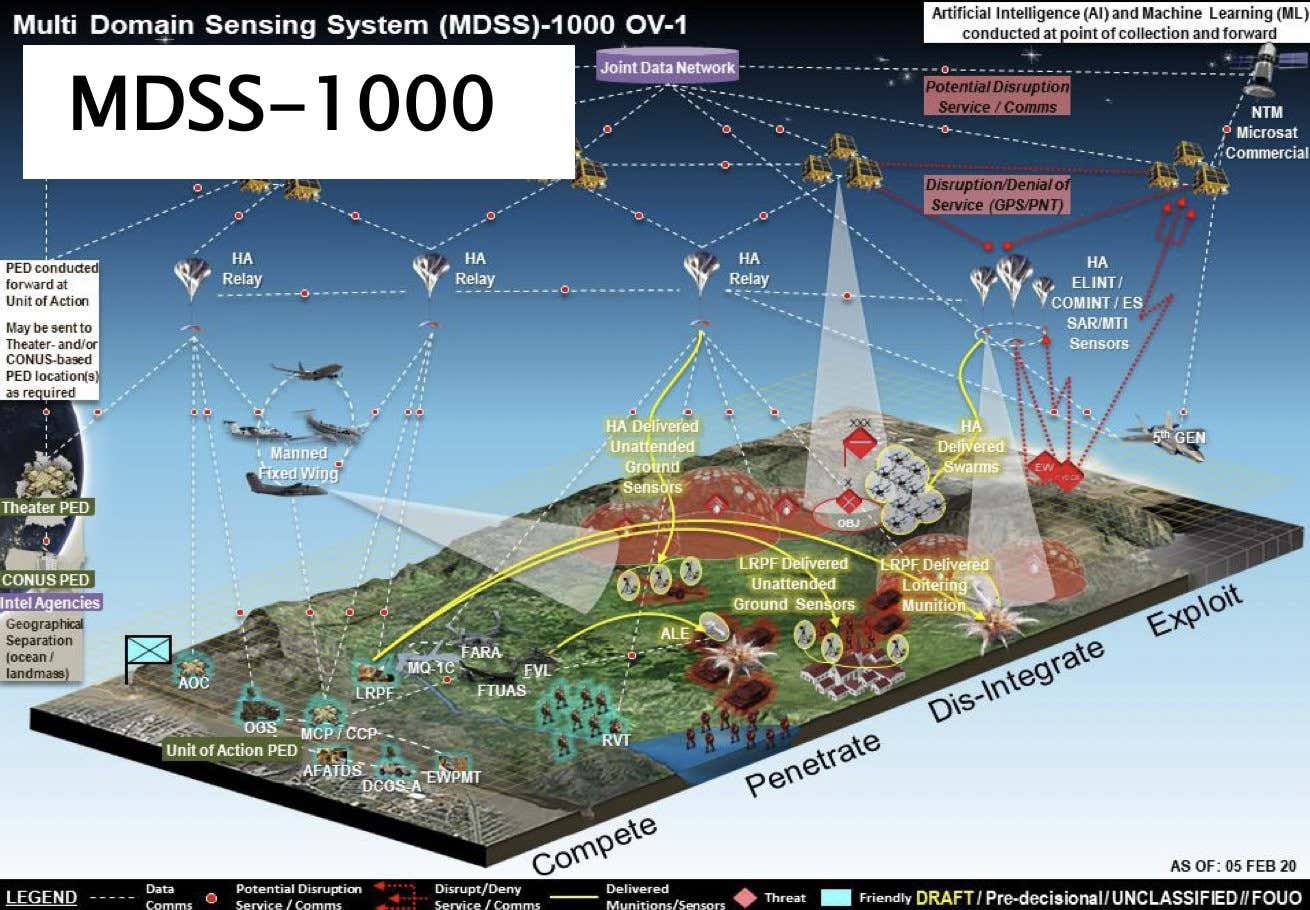
These are just possibilities, but considering the intelligence value up for grabs here, and how hard it can be to obtain that intelligence, they are at least worth pondering and it is really quite possible that a mix of these scenarios could be at play.
An investigation in a bubble
It also seems quite possible, that when it comes to the Pentagon’s investigations into these matters, there is a lack of real expertise to properly evaluate the evidence. In all the discussions about this topic and the Pentagon’s ‘UFO’ programs under AAWSAP and later AATIP, it seems that they were working largely external to the sprawling intelligence infrastructure built over 70 years to quantify foreign threats using limited information and even to exploit them.
For instance, the people in the Defense Intelligence Agency’s Foreign Material Exploitation apparatus can pull crashed MiGs from swamps and get them flying again under total secrecy and those in the Directorate of Science and Technology are tasked with evaluating complex foreign threats from a distance using all the data the intelligence community has to offer. Somehow, when it comes to UAP, we never hear about this existing ecosystem that is perfectly suited to evaluate the topic. It is as if the whole UAP issue has and continues to live in its own tiny intelligence bubble, walled off from the greater military intelligence environment.
While claims that ‘smart people’ have looked at the data may be true, we don’t know who these people are or what their level of expertise or resources is. Do they even exist inside the DoD and intelligence community’s analysis world or are they external to it? How many eyes are actually working on these issues and collaborating to better understand and quantify them? From what we understand, historically very few, at least in regards to the programs that have been disclosed.
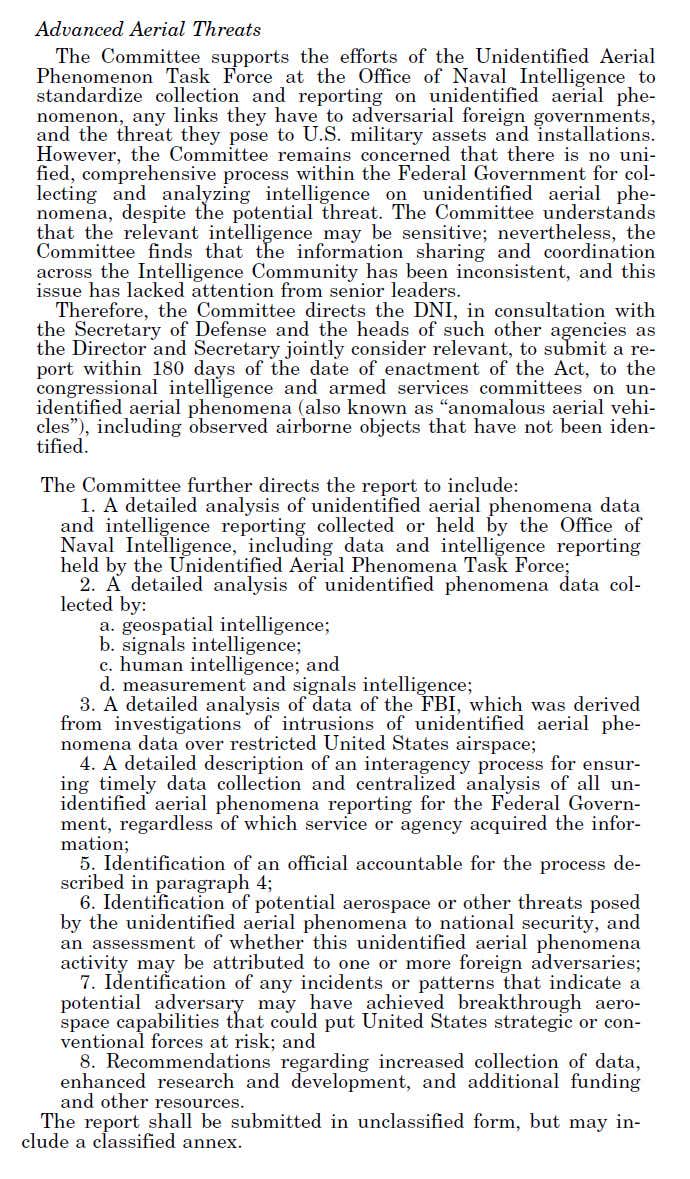
From everything I know about the now famed ‘UAP task force,’ and by others’ accounts as well, it is not some powerful inter-agency initiative with a solid mandate from inside the Pentagon and the intelligence community. Far from it. It is a few people in an office with very limited resources that are often hitting walls when trying to obtain critical information from other intelligence stakeholders.
That’s a huge strategic problem.
The primary reason for this being so troubling is not a looming threat from space invaders or inter-dimensional beings, or the dream of some all-telling disclosure to the public, it is because the next big threat that surprises us from a foreign adversary will likely look very unfamiliar, at least at first. As it sits now, the current technological threat analysis ecosystem appears to be broken. The fact that drones and balloons have appeared to fool it for years, or even worse, never got its attention, is damning. But once again, knowing the DoD’s abysmal track record on the drone threat issue, and the stigma in the DoD around ‘UFOs,’ a subject that few want to touch, this really isn’t at all surprising.
An essential revolution
What is critical to national security now is to transform this little struggling UAP task force into a properly-funded and internally mandated ‘unidentified observed capabilities’ fusion and analysis cell that pulls every piece of data the Pentagon and the intel community have to offer to evaluate incidents that involve aspects that don’t immediately make sense. This is not just about what happens in the sky either, but also what happens under the sea, where we know anomalous data is encountered but is seemingly tossed into the ether. The same can be said for any anomalous things that are observed in orbit, especially as space continues to rapidly evolve as tomorrow’s battlefield.
Because of the extremely sensitive nature of these sources and methods of relevant data collection, the fusion cell would have to be able to deal with highly classified material, not just whatever it can get its hands on and other scraps from the greater intelligence apparatus. The key is bringing all the relevant data under one clearinghouse with access to the best analytical minds that can rapidly disqualify events that are not actually anomalous and work up high-end intelligence products on each observed event that is. That way we can leave the debilitating biases at the door and be quick to recognize and classify emerging threats as they appear, not years after it has become blatantly obvious they exist.

It also has to work both ways. When an incident is observed via a particular sensor system or platform—even those that are highly classified—that data needs to be fed to the fusion cell and it needs to happen under standing orders from the top down. In other words, it can’t be just a ‘grovel for this or that’ after-the-fact scenario, there has to be a mandate to provide this information as soon as possible, not only after it is asked for. Basically, that has us playing with one hand and one leg tied behind our backs.
This is just as much about identifying patterns of operations as it is about looking into individual capabilities and documenting single events with limited resources. What seems to be lacking here is the ability to see the bigger picture. This type of fusion cell would fix that and such an arrangement is not unique. They are created for many other matters, including terrorism and the proliferation of WMD.
We have the model, the question is why aren’t we using it?
Nowhere left to hide
The truth of the matter is that, in addition to drone swarms and balloons, if something more exotic is truly out there, it will likely be detected much more frequently in the very near future than it has in the past. In fact, the establishment of the fully supported fusion cell I describe may not end up being a choice due to the changes that are about to occur in sensor technology.
Just as we reported on a big revolution in radar and networking technology that allowed these objects to be discovered more frequently by fighter aircraft and other platforms starting roughly a decade or so ago, an even bigger one is just about to come to pass. Far more sensitive and capable radars will soon equip America’s new and potentially even some of its older warships. The U.S. Army is revitalizing its surface-to-air sensor systems with similar radars that are vastly superior to their progenitors, including gallium nitride-based AESA arrays.
In addition, Navy and Air Force fighters will soon be flying with advanced infrared search and track pods daily, giving them a passive form of long-range detection and yet another sensor to bring to bear on low radar cross-section UAP contacts. You can read about how this technology could have a major impact when it comes to detecting and tracking UAP targets in this past post of ours.
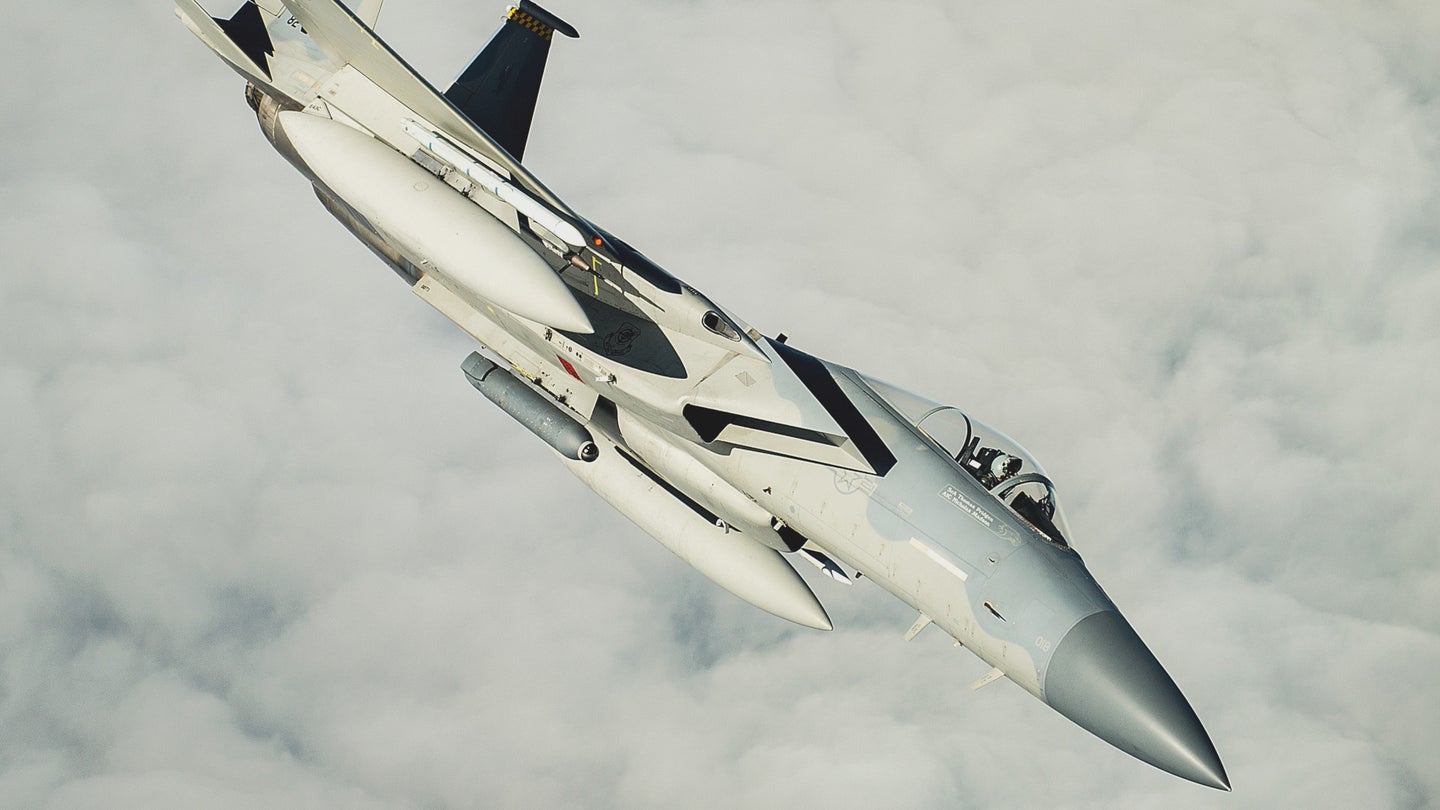
The Air Force is building out new sensing layers in space, especially ones that can detect and track hypersonic missiles careening through the atmosphere at extreme speeds. These new remote sensing layers will be able to see and track things we’ve never seen or tracked consistently before. The massive Long Range Discrimination Radar in Clear, Alaska, will provide radar data of an unprecedented fidelity over a huge area—it’s literally capable of reliably verifying ballistic missile countermeasures and decoys from reentry vehicles. U.S. Space Force is contracting out an array of telescopes to optically track objects in orbit and to detect suspicious changes in those objects’ activity. On top of all this, new artificial intelligence (AI) enabled software will make automatically detecting and tracking strange targets on all types of sensors easier than ever before.
I could go on and on here. The bottom line is that a lot more people running military sensor systems will be able to detect hard-to-spot targets in the very near future. This will drastically increase the data set on anomalous events and will make many more people aware of this unique problem, which could make it much harder to keep under wraps.
What has Congress really been told?
The Pentagon’s nonsense in regards to UFOs appears to have actually threatened national security at the highest level—literally leaving the homeland with an open door to be walked through by lowly drones and our most prized military capabilities being allowed to be toyed with for their intelligence value on their home turf. I have stated on numerous occasions that the next 9/11 will come from swarming low-end drones and this situation further underlines just how plausible that is. But we really don’t even need to use our imagination. Just ask Saudi Arabia if that is plausible.
For the enemy, this has been a perfect scenario where they have been able to do the seemingly unimaginable with literally no recourse—whether that is out of cultural stigmas, unwillingness to admit to a strategic weakness, or not wanting to allude in any way to our own operations or capabilities, the result is the same—these actions have become more brazen and the intelligence value being gleaned has become greater.
While it is good that the Senate Select Committee On Intelligence has demanded a report on this issue, the question of exactly the quality of analysis that will go into that report is very real. Even recent leaked documents show things being classified as evidence of unexplained UAP, while even based on our own investigation, it seems pretty clear as to their basic classification. Common optical effects, balloons, and even known aircraft shapes seem to have chronically stumped the Pentagon’s UAP investigators.
The same can be said for the now-famous briefings that Congressional members and the President have received on the issue. Who exactly presented this information and the question as to its accuracy and quality of analysis remains very murky. One cannot rely on legislators, even highly interested ones, or their staff to critically analyze data on such a bizarre, complex, and largely misconstrued subject. Are they even getting good, unbiased information at all? If investigators have been fooled on many of these incidents, regardless of the reasons, that means decision-makers in Congress many not be getting good information on this topic.

At the same time, there is still a lot we do not know. It could very well be there are many additional, far stranger, and more compelling events that do not point to drone swarms or balloons as being the culprit. Let’s hope so! But that doesn’t change the reality that some of them do point overwhelmingly in that direction.
The absolutely horrific communications job by the Department of Defense on this matter, one they themselves largely dragged back into the spotlight, has made the entire topic even more confusing for people to interpret. This must change in order to instill any form of confidence in the answers the government provides on this issue. There is a long and weird history of the U.S. government, and the Pentagon and intelligence community especially, abusing the UFO topic dating back the better part of a century. The media itself could do a way better job too. The fact that it’s always framed in an “alien” context when news relating to these events hits major outlets is highly detrimental to a very relevant cause.
So, how do we fix this situation? What should come next?
Plugging the gap
Step one is to admit that we have a major drone problem far closer to home than anyone wants to own up to and that at least one of our adversaries has made a mockery of us and compromised key capabilities using remarkably low-end technology. Simply put, they have won and in an outstandingly ironic and ingenious way. Only once we come to terms with this can move on to solving this problem and confronting who is behind it, although I think it is pretty clear who that could be considering there is a list with really just two names on it.
Step two, we just need to stop the UFO taboo charade and get serious about really looking into every anomalous observed capability, regardless of its cultural connotations. We must fully fund a real intelligence fusion center to work these cases and demand that our military and intelligence apparatus funnel all new ones to the fusion cell. This directive needs to come from the top within the military and the intelligence community. It can’t be another stepchild program foisted on the DoD by legislators that may not even be in office in a couple of years. This investigative unit must have unfettered access to every relevant data source and intelligence product the U.S. military and the intelligence community have to offer. If we find out aliens are visiting earth in the process, great! But that is not the point.
Step three, totally change the communications strategy around this topic. Provide information on absolutely everything that you can, even if it is inconvenient, while protecting sources and methods where relevant.
If we don’t go down this road, drones spying on our electronic emissions, tactics, and more may be the least of our worries. Those same capabilities can easily be tasked with defeating many of the same platforms they are surveilling. But above all else, it may be drones and balloons now, but we appear to be willfully covering our eyes to what could be our adversary’s next major technological breakthrough, which could very well look like it is alien at first glance.
As it sits now, we would probably only find out that it actually isn’t once it’s too late.
Contact the author: Tyler@thedrive.com
Author’s note: A special thanks to our whole team—@Franticgoat, @BrettTingley, @Strategic_doubt, @MC05A—that has worked tirelessly on covering this issue over the years. All their work is linked throughout this piece, which would not have been possible without their contributions.
